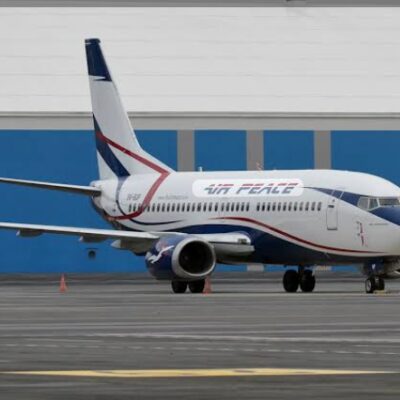
BY: OLAPEJU OLUBI
To address concerns around manpower shortages in critical areas of its operations, the Managing Director of the Nigerian Airspace Management Agency (NAMA), Mr. Tayib Odunowo, has said that the recently-recruited 100 Air Traffic Controllers (ATCs) were being trained in addition to recalling active but retired ones, all in an effort to replenish its depleted manpower stock.
Odunowo made the disclosure recently at the annual conference of the League of Airport and Aviation Correspondents (LAAC) held in Lagos.
According to him, NAMA was also partnering with the military in the urgent task of growing a sufficient pool of professionals to man numerous navigational equipment and ultimately boost air safety.
He said: “We have brought some people back right now that are actually retired because of the years in service not age. These are people who still have a lot of fire power in them. We have recruited 100 controllers now and we have started training. The challenge we are having is space constraint in NCAT. So, we have had an MoU with the Rector of NCAT. So they are going to do a hybrid.
“Thirdly right now, we are working with the military. The military also has a school where they train controllers. They expressed interest in helping us. And then lastly, we are bringing in an organisation to train our controllers to get all their classes of licenses in six months. So, we have a four-point approach that we are working on to quickly close the gap”.
To tackle the perennial power challenge, the NAMA boss said solar powered transmitters have been procured which also bridges the communication gap.
While acknowledging that the agency has communication issues in the upper airspace, he said experienced personnel were being deployed to address it.
Odunowo said NAMA was addressing issues around Aeronautical Information Service (AIS) automation process, being the backbone of the agency’s communication.
“Everything that we are talking about now is going to ride on AIS automation and that process is ongoing currently. The contractor has promised that all the five international airports will be operational.
“So, once we do that as phase one, then by the time we move to phase two and our communication issues will be history.
“In multilateration project, it is 90% completed. It is basically concentrated more in the Delta. That region is the busiest airspace right now in Nigeria. If you look at the proximity of all the airports, you have all these low flying objects.
“What NAMA is trying to do is to make sure that anything that flies in the Delta region is picked by the Satellite Based Augmentation System (SBAS). But right now, we intend to deploy Multilateration Technology (MLAT) all over Nigeria, starting from the Delta region. Don’t forget even in foreign countries MLAT kind of superimposes your regular radar. So, they actually work hand-in-hand”, he explained
Olapeju is a journalist and aviation reporter.





